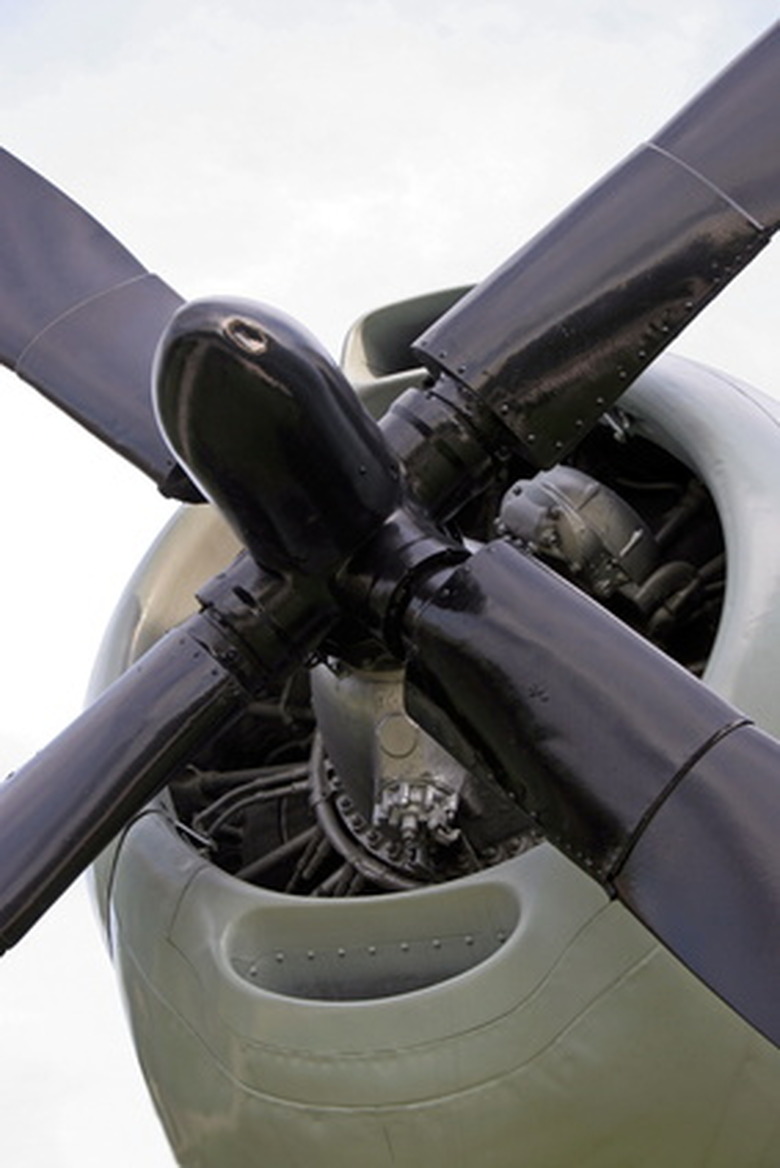How To Calculate Angular Acceleration
Angular acceleration is similar to linear acceleration, except that it travels along an arc. An example of angular acceleration would be an airplane propeller spinning to reach a required number of revolutions per minute (rpm). You can calculate angular acceleration by considering the change of angular velocity with respect to the time required for acceleration. This is the same method used for linear acceleration, except that linear acceleration derives from linear velocity.
Step 1
Acquire the necessary data. You will need the starting angular velocity and the ending angular velocity. You will also need the time taken to accelerate between the two velocities.
As an example, suppose you want to calculate the angular acceleration of a propeller that takes 8 seconds to go from a standstill to 3,000 rpm. The starting angular velocity in this case is 0 rpm — since the propeller is at a standstill — and the ending angular velocity is 3,000 rpm. The acceleration time is 8 seconds.
Step 2
Calculate the change in angular velocity by subtracting the starting angular velocity from the ending angular velocity. In our example, 3,000 rpm minus 0 rpm is 3,000 rpm.
Step 3
Convert the change in angular velocity to the same units as your time measurement. In this example, you would change revolutions per minute to revolutions per second (rps) by multiplying the change of angular velocity (which we calculated in Step 2) by 60. In other words, 3,000 rpm multiplied by 60 seconds is 180,000 rps.
Step 4
Divide the change in angular velocity by the acceleration time (i.e., the time it took to go from the starting angular velocity to the ending angular velocity). In our example, you would divide 180,000 rps by 8 seconds. This results in an angular acceleration of 22,500 revolutions per second, per second (i.e., rps squared). Thus, for every second that passes, velocity increases by 22,500 rps.
Cite This Article
MLA
Taylor, C.. "How To Calculate Angular Acceleration" sciencing.com, https://www.sciencing.com/calculate-angular-acceleration-7508269/. 24 April 2017.
APA
Taylor, C.. (2017, April 24). How To Calculate Angular Acceleration. sciencing.com. Retrieved from https://www.sciencing.com/calculate-angular-acceleration-7508269/
Chicago
Taylor, C.. How To Calculate Angular Acceleration last modified March 24, 2022. https://www.sciencing.com/calculate-angular-acceleration-7508269/
